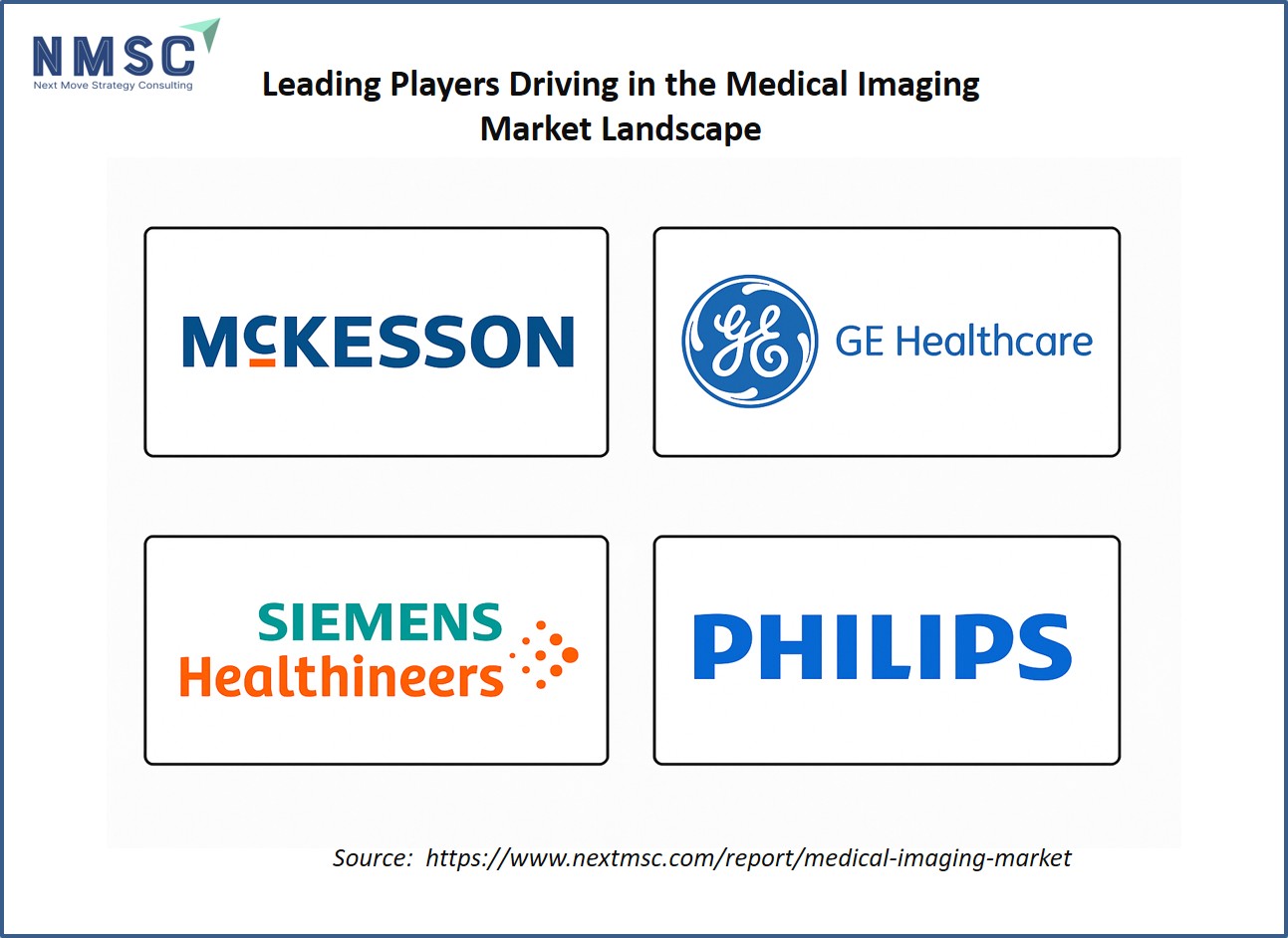Medical Imaging in 2025: Revolutionizing Global Healthcare
Published: 2025-09-23

Medical imaging is at the heart of modern healthcare, helping doctors diagnose diseases, plan treatments, and save lives. In 2025, advancements in artificial intelligence (AI) and global health initiatives are making imaging more accessible and effective than ever. From the World Health Organization’s (WHO) landmark resolution to cutting-edge AI innovations from companies like Philips and JLK, the landscape of medical imaging is evolving rapidly.
Why Medical Imaging Matters
Medical imaging—think X-rays, CT scans, MRIs, and ultrasounds—is a cornerstone of modern medicine. It allows doctors to see inside the body, detect diseases early, and guide treatments with precision.
According to the report by Next Move Strategy Consulting, the global Medical Imaging Market size is predicted to reach USD 52.13 billion by 2030 with a CAGR of 5.7% from 2025-2030.
Without accurate imaging, diagnosing conditions like cancer, heart disease, or stroke becomes a guessing game, leading to poorer patient outcomes.
The demand for imaging is skyrocketing. Non-communicable diseases (NCDs) like cardiovascular disease, cancer, and stroke cause 74% of global deaths, and imaging is critical for their diagnosis and management. But access to these tools isn’t equal. High-income countries like Germany have robust imaging infrastructure, while many low- and middle-income countries struggle with basic equipment. This gap is what global health leaders and innovators are working to close in 2025.
Key Points:
-
Medical imaging is essential for diagnosing and treating NCDs, infectious diseases, and injuries.
-
Global disparities in imaging access are a major challenge.
-
Demand is rising due to increasing chronic disease rates.
Medical imaging is vital for effective healthcare, but unequal access remains a global issue, driving the need for innovative solutions and policy changes.
WHO’s Landmark Resolution on Imaging Access
In May 2025, the 78th World Health Assembly (WHA) adopted a historic resolution to strengthen medical imaging capacity worldwide. This move, celebrated as a “landmark” by WHO Director-General Dr. Tedros Adhanom Ghebreyesus, highlights the urgent need to address disparities in imaging access. The resolution calls for collaboration between governments, organizations, and private companies to improve imaging infrastructure, workforce training, and technology deployment.
The WHO’s focus isn’t just about buying more machines. It emphasizes a holistic approach: investing in healthcare IT, training professionals, and ensuring equipment maintenance. This is crucial because even the best MRI scanner is useless without trained staff or reliable power. The resolution also aligns with broader global health goals, like reducing the impact of NCDs and improving emergency preparedness.
Key Points:
-
WHO’s resolution aims to bridge global imaging access gaps.
-
It promotes investment in infrastructure, training, and maintenance.
-
Collaboration with stakeholders is central to implementation.
The WHO’s 2025 resolution is a game-changer, pushing for equitable imaging access through global cooperation and comprehensive strategies.
Who Are the Leading Players in the Medical Imaging Industry and What Strategies Are They Using?
Key companies in the medical imaging industry include McKesson Corporation, GE Healthcare, FUJIFILM India Private Limited, Merative, Agfa-Gevaert Group, Koninklijke Philips N.V., Siemens Healthineers AG, Carestream Health, Shimadzu Corporation, Novarad, Mach7 Technologies Ltd., Samsung Healthcare, Hitachi High-Tech Corporation, Esaote SPA, Canon Medical Systems Corporation, and others. To maintain their market leadership, these players are actively pursuing strategies such as partnerships and new product launches.
AI’s Role in Transforming Medical Imaging
Artificial intelligence is revolutionizing medical imaging by making it faster, more accurate, and more accessible. Companies like Philips and JLK are leading the charge with AI-driven solutions that enhance every step of the imaging process—from scanning to diagnosis.
Philips: AI for Better Diagnosis
Philips, a global leader in healthcare technology, is leveraging AI to improve image quality, accelerate scans, and streamline workflows. According to Carla Goulart Peron, Philips’ Chief Medical Officer, meaningfully applied AI can help make high-quality diagnostics available everywhere.
Philips takes a holistic approach, integrating AI with cloud-based data management and service models tailored to local needs. Their solutions support not just diagnostics, but also image-guided treatments for conditions like heart disease and cancer. These AI-enabled innovations are central to achieving the WHO’s vision of expanding access to medical imaging worldwide.
Key Points:
-
Philips uses AI to enhance image quality, speed, and workflow efficiency.
-
Solutions integrate with cloud-based platforms to improve accessibility.
-
AI supports both diagnostics and image-guided treatments.
JLK: Pioneering Stroke AI Solutions
South Korean company JLK is expanding its footprint in the medical imaging AI space, with a particular focus on stroke care. In 2025, JLK secured regulatory approvals for its AI solutions in both the United States and Japan. These tools aim to improve diagnosis speed and accuracy across the stroke care continuum—from initial imaging to follow-up treatment.
JLK’s strategy centers on seamless integration with hospital systems, ensuring its solutions can be adopted without disrupting existing workflows. With multiple AI products for stroke imaging, the company is positioning itself as a global leader and actively entering new markets in Asia, North America, and Europe.
Key Points:
-
JLK has regulatory approvals in the US and Japan for stroke imaging AI.
-
Products aim to improve diagnostic speed and accuracy.
-
Focus on integration with existing hospital IT systems to drive adoption.
AI is transforming medical imaging by improving accuracy, accessibility, and efficiency, with companies like Philips and JLK leading innovative solutions.
Global Challenges and Opportunities
|
Global Challenges and Opportunities |
Details |
|
Challenges |
Lack of basic imaging equipment and trained staff |
|
Opportunities |
|
|
|
|
|
|
|
|
Summary |
Despite infrastructure gaps, AI and global |
The Future of Medical Imaging in 2025
Looking ahead, medical imaging is set to become even more precise and widespread. AI will continue to improve diagnostic accuracy, particularly for complex conditions like stroke and cancer. The WHO’s resolution will likely spur investments in imaging infrastructure, especially in underserved regions. Meanwhile, companies like Philips and JLK are pushing the boundaries with AI platforms that integrate data and enhance hospital efficiency.
The demand for imaging AI isn’t slowing down. As healthcare systems see the benefits—faster diagnoses, better outcomes, and cost savings—adoption will grow. The focus will also shift toward preventive care, with AI helping predict disease progression.
Key Points:
-
AI will drive more accurate and predictive diagnostics.
-
WHO’s resolution will boost global imaging investments.
-
Demand for imaging AI will rise as benefits become clear.
In 2025, medical imaging will see rapid growth, driven by AI advancements and global efforts to improve access and outcomes.
Next Steps for Healthcare Stakeholders
To make the most of these advancements, healthcare providers, policymakers, and organizations can take actionable steps:
-
Invest in Training: Upskill healthcare workers to use advanced imaging tools effectively, ensuring maximum impact.
-
Adopt AI Solutions: Integrate AI-driven imaging tools to improve diagnostic speed and accuracy, especially in underserved areas.
-
Collaborate Globally: Partner with organizations like WHO, Philips, or JLK to build robust imaging infrastructure.
-
Leverage Remote Diagnostics: Use AI-supported remote diagnostic models to bring imaging expertise to areas lacking specialists.
-
Prioritize Maintenance: Ensure imaging equipment is regularly serviced to avoid downtime and maximize efficiency.
By embracing these steps, stakeholders can help make high-quality medical imaging a reality for all, improving health outcomes worldwide.
About the Author
 Nitrishna Sonowal is an SEO Executive and Content Writer with 3+ years of experience in digital marketing. She combines analytical insights with creative storytelling to deliver impactful digital solutions. Beyond work, she enjoys dancing, baking, and exploring new places.
Nitrishna Sonowal is an SEO Executive and Content Writer with 3+ years of experience in digital marketing. She combines analytical insights with creative storytelling to deliver impactful digital solutions. Beyond work, she enjoys dancing, baking, and exploring new places.
About the Reviewer
 Sanyukta Deb is a skilled Content Writer and Digital Marketing Team Leader, specializing in online visibility strategies and data-driven campaigns. She excels at creating audience-focused content that boosts brand presence and engagement, while also pursuing creative projects and design interests.
Sanyukta Deb is a skilled Content Writer and Digital Marketing Team Leader, specializing in online visibility strategies and data-driven campaigns. She excels at creating audience-focused content that boosts brand presence and engagement, while also pursuing creative projects and design interests.

















Add Comment